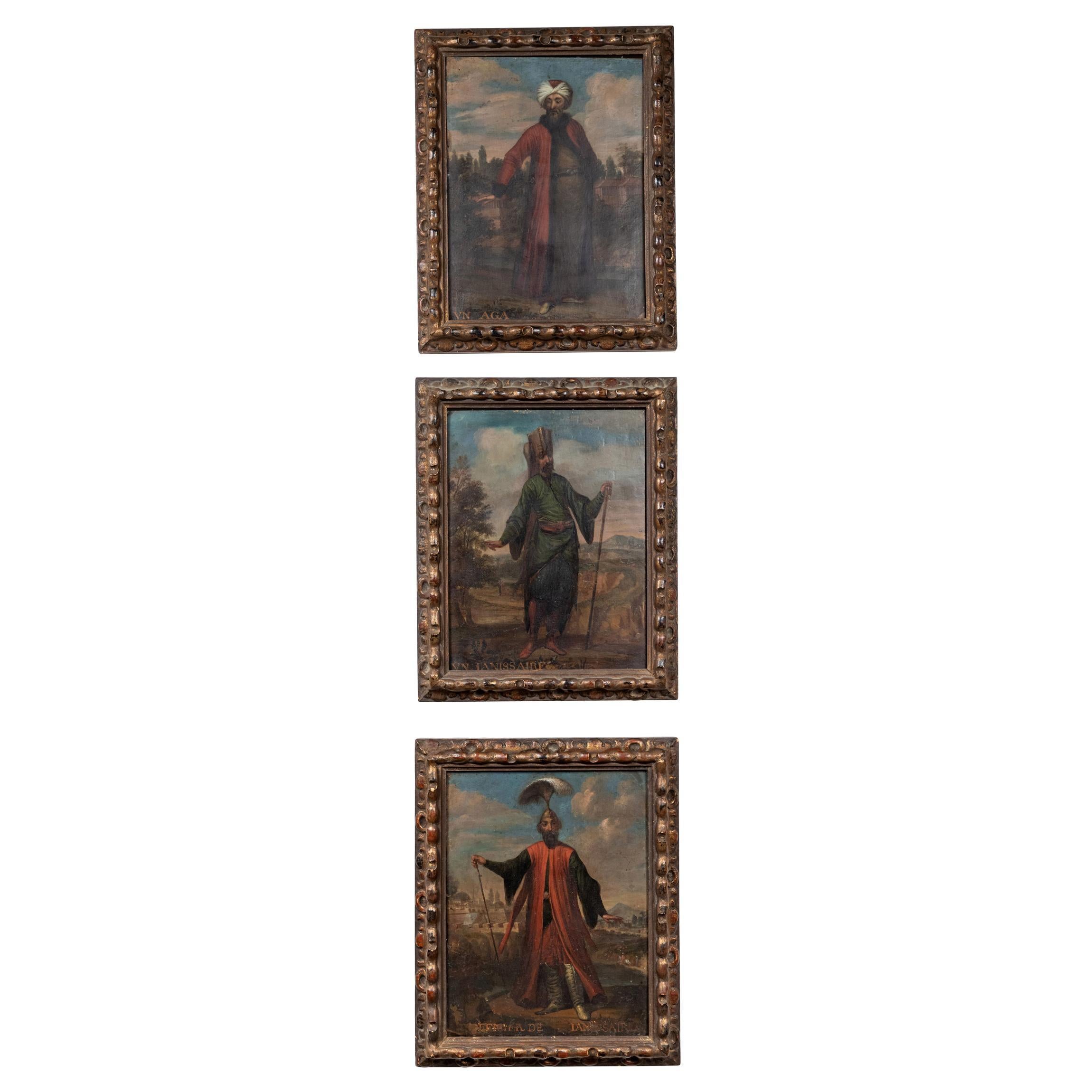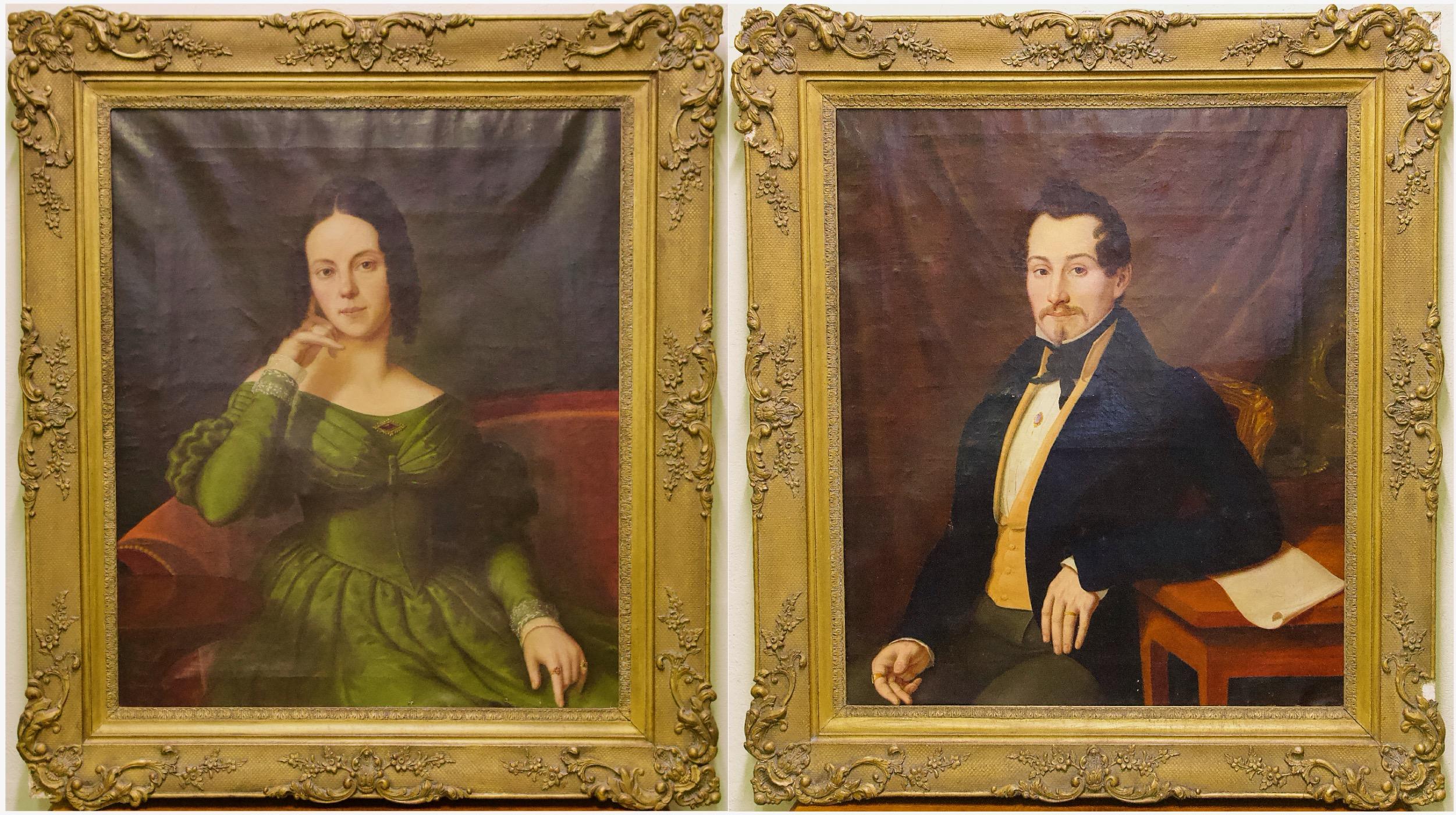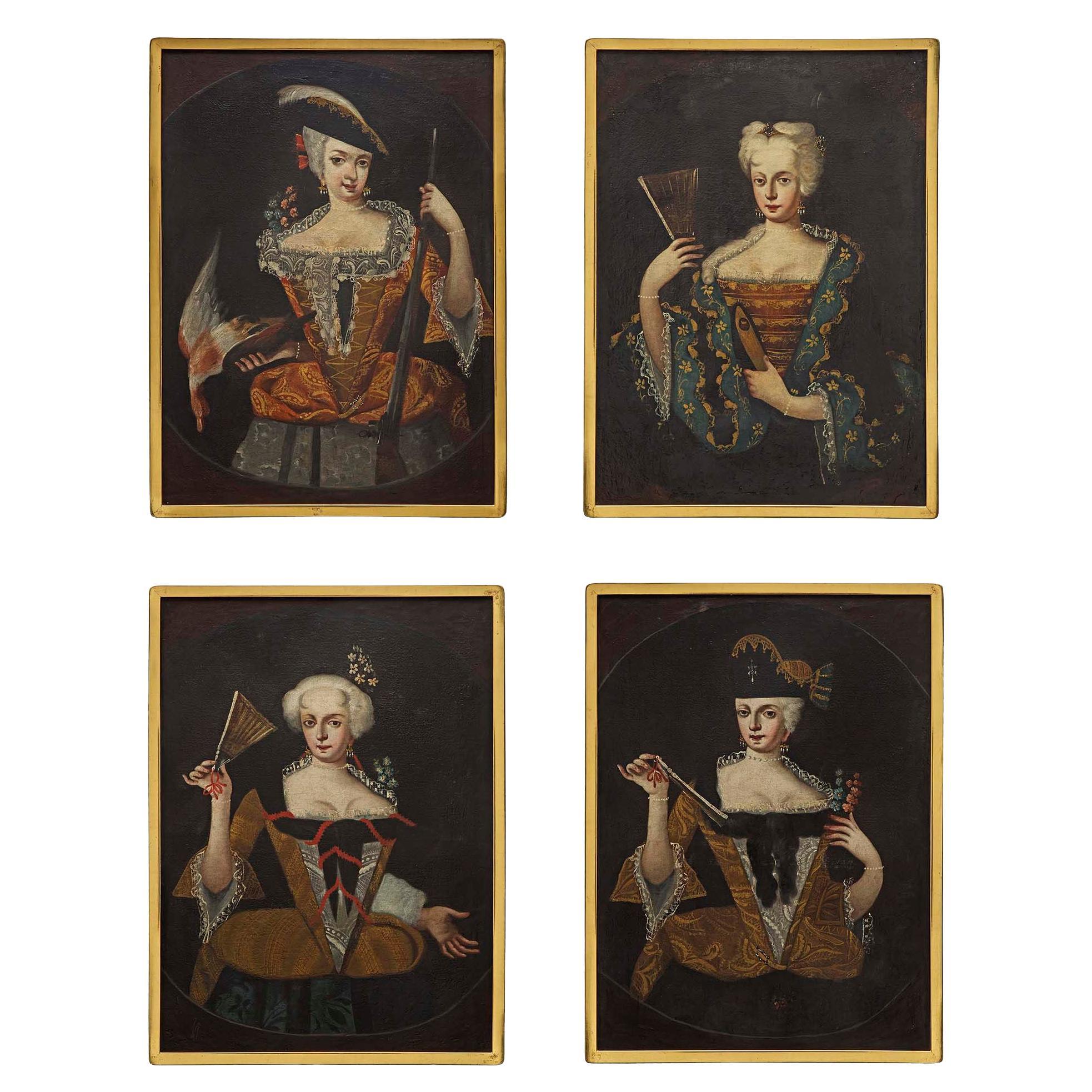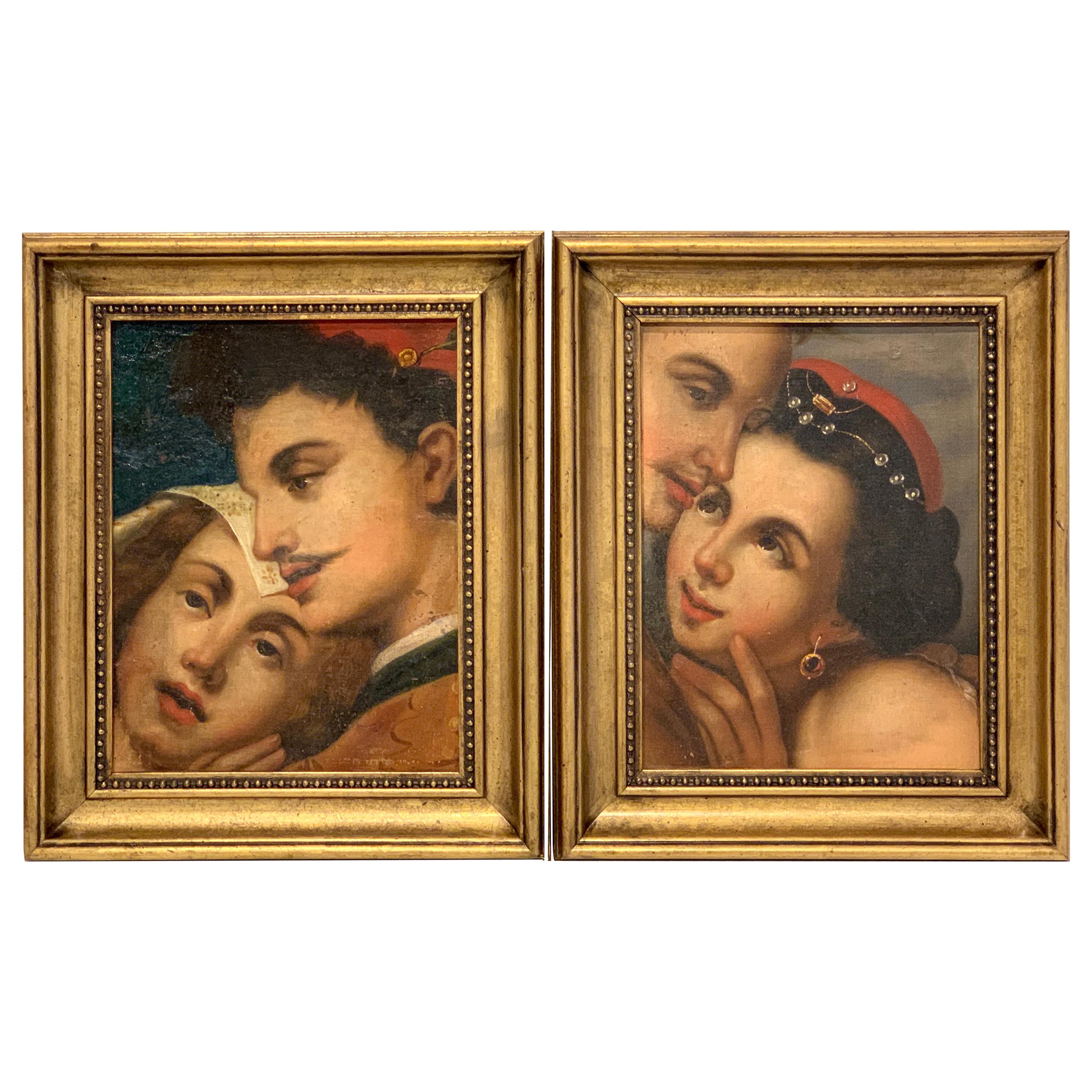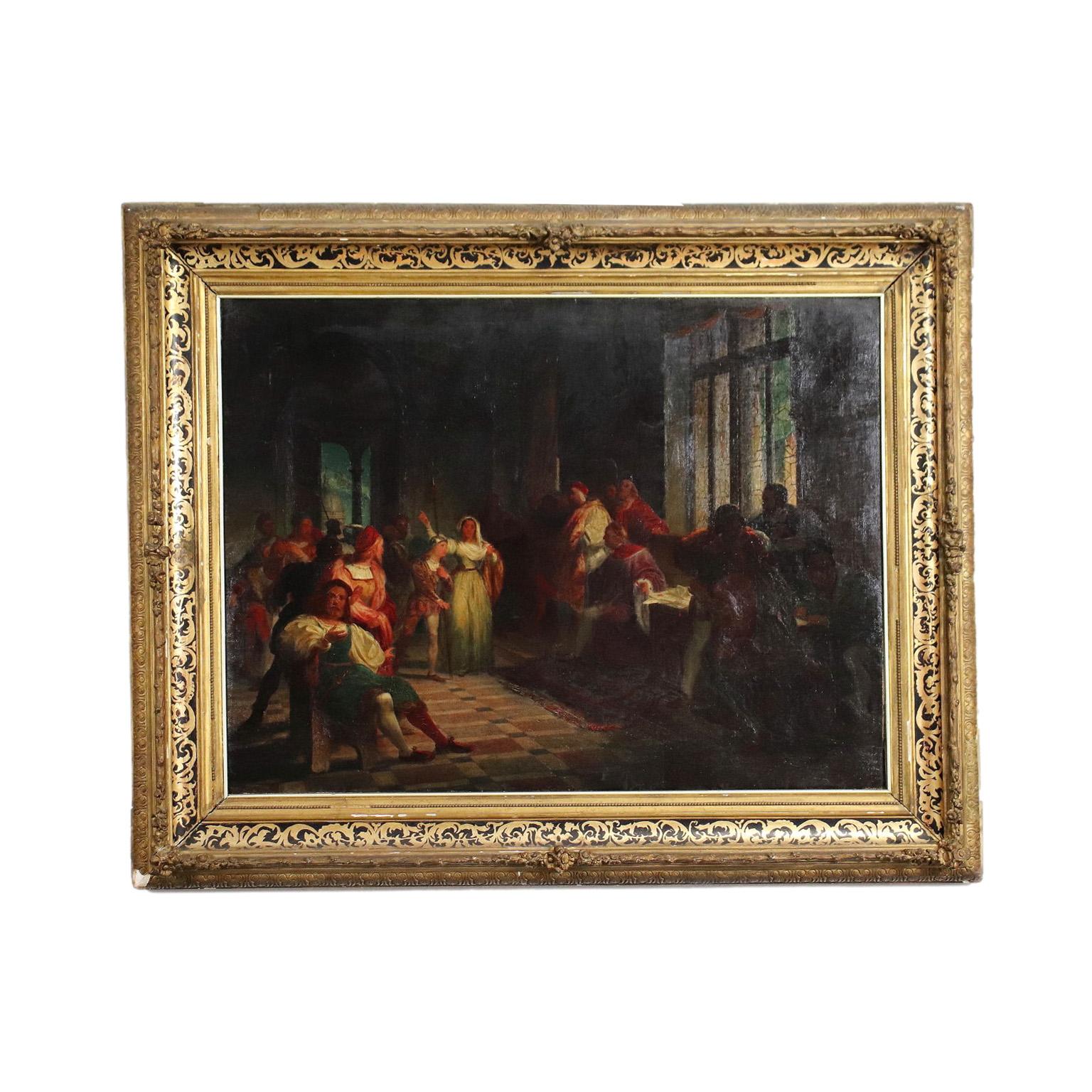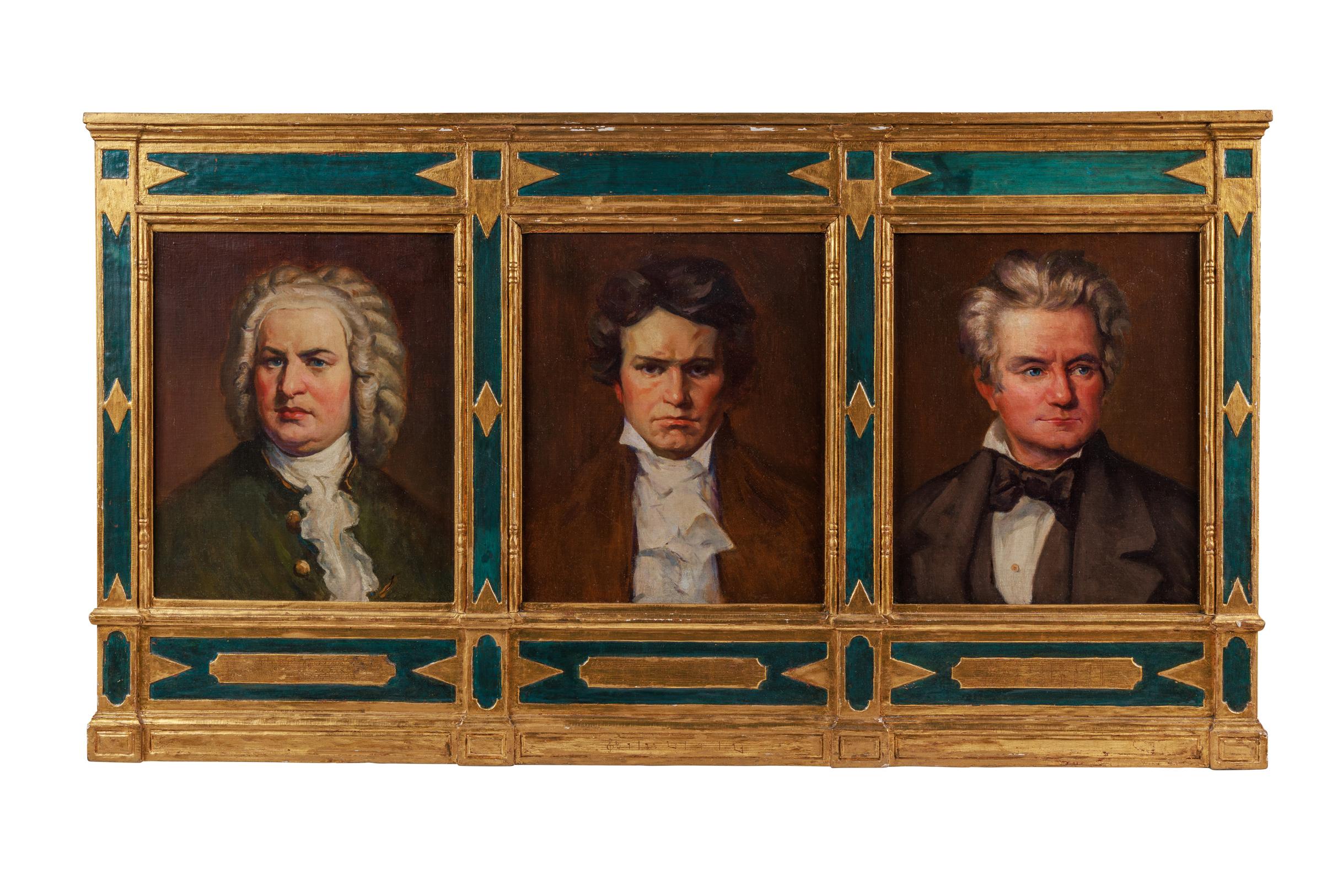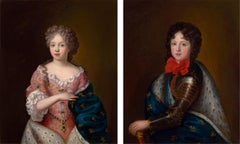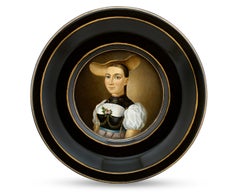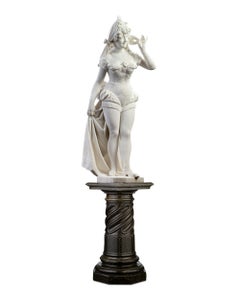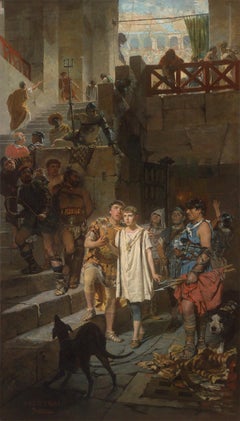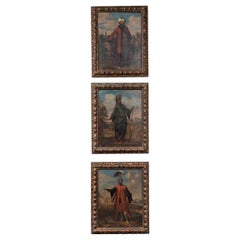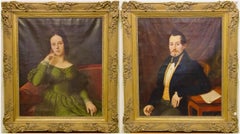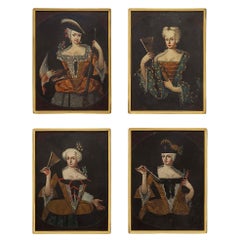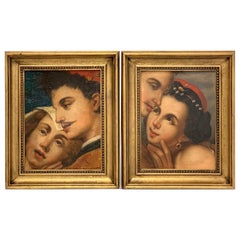Items Similar to Tri-Directional Portrait Commemorating the Russo-Turkish War
Video Loading
Want more images or videos?
Request additional images or videos from the seller
1 of 13
UnknownTri-Directional Portrait Commemorating the Russo-Turkish WarCirca 1739
Circa 1739
$148,500
£112,068.87
€128,301.91
CA$209,434.24
A$229,932.67
CHF 119,956.36
MX$2,782,505.41
NOK 1,503,466.83
SEK 1,416,661.04
DKK 957,739.51
About the Item
Austrian School
18th Century
Tri-Directional Portrait Commemorating the Russo-Turkish War
Oil on wooden strips
This extraordinary tri-directional portrait exemplifies the rare innovation known as a triscenorama, capturing a pivotal diplomatic moment through ingenious artistic technique. Employing triangularly cut wooden strips, this remarkable work simultaneously depicts three imperial figures central to the Russo-Turkish War of 1735-1739: Empress Anna Ivanovna Romanova of Russia when viewed directly, Holy Roman Emperor Charles VI from the left and Ottoman Sultan Mahmud I from the right, commemorating the Treaty of Nissa that concluded this significant European conflict.
The portrait utilizes an exceptionally rare optical technique that predates modern movable imaging technology. When observed from different angles, the painted triangular wooden strips create a transformative effect, revealing entirely different imperial portraits as the viewer shifts position. The precision required to execute such a work demonstrates remarkable technical mastery, as the artist had to conceptualize three distinct portraits as well as the meticulous arrangement of the panels. This sophisticated manipulation of perspective creates an interactive viewing experience considered revolutionary for its time.
Almost certainly created by an Austrian artist, this diplomatic artwork likely served as a commemorative piece marking the Treaty of Nissa, signed in September 1739. The treaty concluded Russia's ambitious campaign to secure access to the Black Sea while countering Ottoman raids in Ukraine and the Caucasus regions. Given its exceptional quality and historical significance, this portrait was possibly commissioned by Emperor Charles VI himself, potentially serving as a diplomatic gift to either Empress Anna or Sultan Mahmud I during the treaty negotiations.
Under Empress Anna's leadership, Russia sought to counter devastating raids from Ottoman allies, particularly the Crimean Tatars, who had been destabilizing Ukraine through systematic incursions. While Russian forces achieved notable victories at Bakhchisaray and Ochakov under Field Marshals von Münnich and Lacy, Austria faced repeated defeats by Ottoman forces. The resultant Treaty of Nissa produced mixed outcomes: Russia gained the fortress of Azov (though its fortifications were to be dismantled) but failed to secure naval access to the Black Sea, while Austria surrendered Belgrade and northern Serbia. This treaty stands as Russia's final attempt to secure the Crimean Peninsula until Catherine the Great's successful campaigns nearly five decades later.
Circa 1739
Panel: 15 1/8" high x 12" wide (38.42 x 30.48 cm)
Framed: 18 7/8" high x 15 7/8" wide x 2" deep (47.94 x 40.32 x 5.08 cm)
- Creation Year:Circa 1739
- Dimensions:Height: 18.88 in (47.96 cm)Width: 15.88 in (40.34 cm)Depth: 2 in (5.08 cm)
- Medium:
- Movement & Style:
- Period:
- Condition:
- Gallery Location:New Orleans, LA
- Reference Number:Seller: 32-09791stDibs: LU18616245752
About the Seller
5.0
Vetted Professional Seller
Every seller passes strict standards for authenticity and reliability
Established in 1912
1stDibs seller since 2013
19 sales on 1stDibs
Typical response time: 10 hours
- ShippingRetrieving quote...Shipping from: New Orleans, LA
- Return Policy
Authenticity Guarantee
In the unlikely event there’s an issue with an item’s authenticity, contact us within 1 year for a full refund. DetailsMoney-Back Guarantee
If your item is not as described, is damaged in transit, or does not arrive, contact us within 7 days for a full refund. Details24-Hour Cancellation
You have a 24-hour grace period in which to reconsider your purchase, with no questions asked.Vetted Professional Sellers
Our world-class sellers must adhere to strict standards for service and quality, maintaining the integrity of our listings.Price-Match Guarantee
If you find that a seller listed the same item for a lower price elsewhere, we’ll match it.Trusted Global Delivery
Our best-in-class carrier network provides specialized shipping options worldwide, including custom delivery.More From This Seller
View AllPair of Royal Portraits of the Duke and Duchess of Burgundy
By Pierre Gobert
Located in New Orleans, LA
Follower of Pierre Gobert
18th century French
The Duke and Duchess of Burgundy
Oil on canvas
Refinement and intricacy characterize these royal portra...
Category
18th Century Portrait Paintings
Materials
Canvas, Oil
German Miniature of Young Lady in a Fancy Hat
Located in New Orleans, LA
This charming German miniature painting, created of oil on copper, depicts a young woman wearing a large and lavish hat. With dark, braided hair and blue eyes, the sitter's cheerful ...
Category
19th Century Old Masters Portrait Paintings
Materials
Copper
Masquerade
By Fortunato Galli
Located in New Orleans, LA
Masquerade, a traditional yet playful composition by Fortunato Galli, reflects the realism and intricacy that defined Italian sculpture at the end of the 19th century. Magnificently ...
Category
19th Century Other Art Style Figurative Sculptures
Materials
Marble
Young Emperor by Erulo Eroli
Located in New Orleans, LA
Erulo Eroli
1854-1916 Italian
Young Emperor
Signed "Erulo Eroli Roma" (lower left)
Oil on canvas
Standing over five feet tall, this monumental painting by celebrated Italian pain...
Category
Late 19th Century Academic Figurative Paintings
Materials
Canvas, Oil
Qing Dynasty Chinese Reverse Glass Painting
Located in New Orleans, LA
Glass takes the place of canvas in this Qing Dynasty reverse glass painting dating to the 19th century. Chinese painters and calligraphers bega...
Category
19th Century Qing Paintings
Materials
Glass, Oil
Henry Bowles Howard, 12th Earl Of Suffolk And 5th Earl Of Berkshire
Located in New Orleans, LA
Sir Joshua Reynolds
1723-1792 British
Sir Henry Bowles Howard, 12th Earl of Suffolk and 5th Earl of Berkshire
Oil on canvas
Sir Joshua Reynolds is unequivocally considered the most important English portraitist of the 18th century who was instrumental in adapting the Grand Manner style in the portrait genre. In fact, when the Royal Academy was founded in 1768, Reynolds was elected its first President, setting the precedent of quality for which all other portraitists would strive.
Reynolds's portrait of Henry Bowles Howard, 12th Earl of Suffolk, showcases his genius in the genre and mastery over the medium. Reynolds’s portrait of the Earl expertly invokes classical values with strong lighting, rich colors and expert attention to detail to help underscore the prominence and revered echelon of the sitter. Howard was an esteemed British politician and Knight of the Garter. He served as Secretary of State for the Northern Department from 1771 to 1779, and he played a key role in utilizing mercenaries during the American Revolution and safeguarding Sweden's independence.
The portrait employs Reynolds's signature style to render Howard rightfully as a gentleman of distinction. Captured seated in a stately library, the Earl appears learned and austere as he places one hand upon a stack of important documents and looks wistfully into the distance. Reynolds makes these compositional choices decisively, as the seated position gives Howard a weighty appearance of importance and the semi-profile turn captures his countenance at an attractive angle that highlights his strong, masculine features. The work draws on the classical conventions of Greek and Roman art and the Italian Renaissance masters, anchoring the nobleman in a history of refinement. Everything from his strong yet welcoming expression to his pale face enlivened by a rush of blood to the cheeks presents the picture of a strong, vital and powerful leader.
As the first president of the Royal Academy in London, Reynolds’s commissions raised the status of an artist in Britain during the Romantic period and also established the portrait as an esteemed high art genre that garnered equal import to the history paintings that reigned supreme in decades prior. Today, Reynolds’s works grace the walls of the most important museums in the world, including the Louvre, the Metropolitan Museum of Art, and the National Gallery in London, among others.
Circa 1770
Canvas: 50 1/2" high x 40 1/4" wide
Framed: 61" high x 52 1/2" wide x 3 1/2" deep
Provenance:
Sir Henry Howard, 12th Earl of Suffolk and 5th Earl of Berkshire, 1739-1779
His mother, Lady Mary Howard, née Finch, Lady Andover, d. 1803
Acquired by descent to her daughter, Frances, and her husband Richard Bagot (later Howard)
Acquired by descent to their daughter, Mary (1784-1877), and her husband Col. Fulke Greville Upton (later Howard), d. 1846
Acquired by descent to Lieutenant Colonel H.R.G. Howard
Sale, Christie's, London, March 24, 1961, no. 29
Julius Weitzner, London and New York
Sale, Paris, Musée Galliéra, December 7, 1965, no. 165
Newhouse Galleries, New York, NY
Mr. and Mrs. F. Howard Walsh, Fort Worth, Texas, 1966
Walsh Family Art Trust
Private collection, Oregon
M.S. Rau, New Orleans
Exhibited:
British Institution, London, 1844, no. 130, loaned by the Hon. Fulke Greville Howard.
South Kensington, "Second special exhibition of National Portraits," 1867, no. 478, lent by the Hon. Mrs. Greville.
Agnew's, London, 1903, no. 17.
Literature:
Algernon Graves and W. V. Cronin, A History of the Works of Sir Joshua Reynolds, P.R.A., vol. 3 (London, 1899), p. 945.
David Mannings...
Category
18th Century Other Art Style Portrait Paintings
Materials
Canvas, Oil
You May Also Like
18th Century Paintings of Ottoman Empire Figures
Located in Los Angeles, CA
A remarkable trio of 18th century, oil-on-copper paintings of, Ottoman Empire figures in colorful robes and accouterments, posing in European style landscapes. Each figure is labeled...
Category
1770s Paintings
Materials
Copper
Pair of Antique Paintings, Oil on Canvas, Portraits. Around 1850.
Located in Berlin, DE
Pair of antique paintings, oil on canvas, portraits. Around 1850.
Portrait of a well-known artist and his wife.
Dimensions are per painting...
Category
19th Century Victorian Portrait Paintings
Materials
Canvas, Oil
$3,612 Sale Price
21% Off
Free Shipping
Set of Four Continental 18th Century Collection of Whimsical Paintings
Located in West Palm Beach, FL
A Continental 18th century whimsical collection of charming paintings depicting Ladies of the 18th century. The set of four paintings is meant to...
Category
Antique 18th Century Unknown Paintings
Materials
Canvas, Giltwood
Near Pair of Old Master Romantic Portraits
Located in West Palm Beach, FL
Near pair of old master romantic portraits
Each one with two hugging period dressed couples, unsigned
Measures: Male facing right
8" x 10.5" can...
Category
Antique 19th Century European Paintings
Materials
Giltwood
$938 Sale Price / set
24% Off
Historical subject, XIXth century
Located in Milan, IT
Oil painting on canvas. Mid 19th century. The large scene tells an unidentified historical episode, set in the Renaissance period, in which an archbishop listens to the plea of a you...
Category
19th Century Other Art Style Figurative Paintings
Materials
Oil
"The Three B's of Music" Beethoven, Bach, & Brahms, An Extremely Rare Painting
Located in Queens, NY
"The Three B's of Music" Beethoven, Bach, and Brahms, An Extremely Rare Oil Painting, C. 1880
"A true music lovers dream" - A true work of art.
A very rare and collectible oil on canvas triptych painting depicting portraits of "The Three Bs of Classical Music": Bach, Beethoven, and Brahms - Housed in a fine carved and painted frame in gold gilt and green paint by Frederick Harer, with musical scores underneath each portrait. The paintings appear to be unsigned. The frame is signed on the back "F. W. Harer" and dated 1918.
Each canvas: 17" high x 14" wide
Outside frame: 29" high x 52.5" wide
Provenance: Academy of Music, Philadelphia PA.
Very good condition overall, no damages noted. Paintings are relined, some gold gilt highlights are rubbed in some areas of the frame.
Frederick Harer was an American painter, sculptor and etcher, best known for his skill as a gilder and frame maker. He produced frames for many of the Pennsylvania Impressionist painters, including Edward Redfield and Daniel Garber. Today, having a Harer frame on a Pennsylvania Impressionist painting...
Category
19th Century Portrait Paintings
Materials
Canvas, Oil
